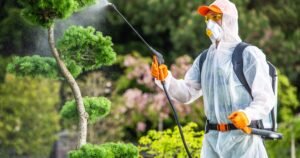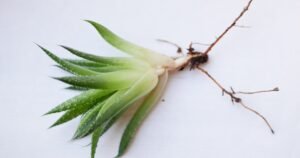Can I Use Dirt from Outside to Grow Plants? Though it is feasible to substitute dirt for potting soil, it’s typically discouraged. Soil from your yard or garden may harbor pests, weed seeds, and diseases that can damage your plants.
Using dirt from outside to grow plants is a common practice, but it’s important to understand this approach’s nuances and potential benefits and risks.
This comprehensive guide will explore the possibilities and considerations of using outdoor soil for indoor or outdoor gardening endeavors.

The Potential Benefits of Using Outdoor Soil
Can I Use Dirt from Outside to Grow Plants? Utilizing outdoor soil in your gardening project can offer several advantages.
Firstly, this method is cost-effective, especially for gardeners operating on a tight budget.
Additionally, outdoor soil tends to have a rich diversity of microorganisms and nutrients beneficial for plant growth.
This diversity could lead to a healthier, more robust plant than sterilized potting soil.
However, care must be taken to ensure the soil is free from harmful pests and diseases that adversely affect plant health.
Understanding Outdoor Soil Composition
Outdoor soil is a complex and dynamic mixture of minerals, organic matter, water, air, and microorganisms.
Its composition varies significantly based on location, climate, vegetation, and geological factors.
Typically, it consists of mineral particles, such as sand, silt, clay, and organic matter, like decaying plant material, microorganisms, and other living organisms.

Advantages of Using Outdoor Soil
Using outdoor soil for gardening offers several advantages:
Natural Nutrient Composition
Outdoor soil usually contains a diverse array of nutrients required for plant growth. These include macronutrients like nitrogen, phosphorus, and potassium and micronutrients like zinc, copper, and iron.
Existing Microorganisms
Outdoor soil is home to many microorganisms, such as bacteria, fungi, and protozoa. Many of these organisms are vital in breaking down organic matter and making plant nutrients available.
Cost-Effective
Using soil from your outdoor environment is cost-effective, eliminating purchasing commercial soil or fertilizers.
Environmental Fit
Using local soil can be beneficial as it aligns with the local ecosystem and can potentially introduce native microbial populations beneficial for plant growth.

Considerations Before Using Outdoor Soil
However, there are several important considerations to keep in mind before using outdoor soil for your plants:
Soil Contaminants:
Outdoor soil may contain contaminants like heavy metals, pesticides, herbicides, or pollutants from nearby industrial areas or traffic.
These contaminants can harm plants and pose health risks if consumed.
Soil-borne Diseases and Pests
Outdoor soil can harbor pests, weed seeds, fungi, and other pathogens that may not be present in sterilized commercial soil.
These can potentially damage or kill your plants.
Soil Structure and Drainage
Outdoor soil might have a different structure and drainage capacity than commercially formulated potting mixes.
It may need to be more compact or properly draining for potted plants.
PH and Nutrient Variability
The pH levels and nutrient composition of outdoor soil can vary widely from one location to another.
Certain plants may require specific pH levels and nutrient ratios for optimal growth, which may not align with the natural soil.
Testing and Preparing Outdoor Soil
Before using outdoor soil, it’s essential to perform soil tests to understand its composition and characteristics.
Key tests include pH levels, nutrient analysis, and checking for contaminants.
If needed, amend the soil by adding organic matter or adjusting pH to meet the requirements of the plants you intend to grow.
Sterilization and Treatment
You can sterilize or treat outdoor soil to mitigate risks associated with pests, diseases, and contaminants.
Common methods include baking the soil in an oven, solarization using sunlight, or treating it with organic fungicides and pesticides.
Using Outdoor Soil in Potted Plants
If you’ve decided to use outdoor soil in your potted plants, remember that it may need additional preparation to ensure it’s suitable for this purpose.
Improving Drainage
Outdoor soil may be too heavy or compact for potted plants, leading to poor drainage and soggy conditions that can damage roots.
Consider adding materials like perlite, sand, or compost to improve the soil’s drainage and aeration.
Balancing Nutrient Levels
Even though outdoor soil is typically nutrient-rich, it may need a different balance for your specific plants.
Consider sending a soil sample to a lab for nutrient analysis. You may need to add specific fertilizers or soil amendments based on the results.
Adjusting pH
Certain plants require specific soil pH levels to absorb nutrients effectively.
If the pH of your outdoor soil doesn’t match your plant’s needs, you can adjust it using lime (to raise pH) or sulfur (to lower pH).
In conclusion, while using outdoor soil in your gardening project can have advantages, it also requires careful consideration and preparation.
Always remember to test and treat your soil as necessary to ensure it provides the optimum environment for your plant’s growth and development.
Blending with Commercial Soil
Consider blending outdoor soil with commercial potting mix or garden soil to create a suitable medium for planting.
This blend can balance natural soil’s advantages with commercial soil’s consistency and structure.
Best Practices for Using Outdoor Soil
Mixing and Aeration
Ensure proper mixing and aeration of the outdoor soil. Break up clumps and mix them thoroughly to ensure uniform distribution of nutrients and prevent compaction.
Regular Monitoring
Regularly monitor the plants for signs of nutrient deficiency, pests, diseases, or any issues related to the soil. Adjust nutrient levels or treat as necessary.
Crop Selection
Choose plant species that are well-suited to the characteristics of the outdoor soil. Some plants may thrive in native soil, while others require additional amendments.
Final Thoughts
Using outdoor soil to grow plants can be viable with careful consideration and preparation.
Understanding the composition, testing for potential issues, sterilizing if necessary, and incorporating best practices can help harness the benefits of natural soil while minimizing the associated risks.
Whether you opt for outdoor soil or a commercial mix, the ultimate goal is to create a nurturing environment that fosters healthy and flourishing plant growth.
Conclusion
Can I Use Dirt from Outside to Grow Plants? In conclusion, using outdoor soil in gardening can offer many benefits, including a rich nutrient profile, a diverse community of beneficial microorganisms, and cost-effectiveness. However, it also comes with challenges like potential contaminants, pests, diseases, and structure and nutrient composition variability. By understanding these factors, performing necessary tests, making necessary amendments, and following best practices, gardeners can effectively utilize outdoor soil to support the growth of healthy, robust plants. Regardless of the choice between outdoor soil or commercial mix, the ultimate objective remains the same – to foster an environment conducive to the thriving of plants.
FAQs
Can I use dirt from outside for plants?
Yes, you can use outside dirt for plants, but it’s crucial to prepare it properly. Outdoor soil should be tested for pH and nutrient levels and checked for contaminants or pests. If necessary, amend the soil and consider sterilizing it to eliminate potential diseases. Also, blending outdoor soil with a commercial mix can balance nutrients and improve soil structure, making it more conducive for plant growth and development.
Can I use outside dirt?
Yes, you can use outside dirt for your plants. However, it’s essential to prepare it properly by testing it for nutrient levels and potential contaminants. Also, mix it with commercial soil to balance nutrients and improve structure. Most importantly, choose plant species that are well-suited to the characteristics of your outdoor soil to ensure optimal growth and development.
Can you use regular dirt to plant in?
Yes, regular dirt can serve as a planting medium. However, conducting soil tests to ascertain its nutrient composition and pH levels and check for possible contaminants is crucial. Appropriate amendments may be required depending on the plant species’ needs. Mixing with commercial soil can balance nutrient levels and improve structure, ensuring a conducive environment for plant growth.
Can you use outdoor ground soil for indoor plants?
Yes, you can use outdoor ground soil for indoor plants. However, it requires careful preparation, including testing for nutrient levels, pH, and potential contaminants. The soil may need amendments to balance nutrients or adjust pH and sterilization to remove pests or diseases. Mixing it with commercial soil can improve its structure and suitability for indoor plants.











